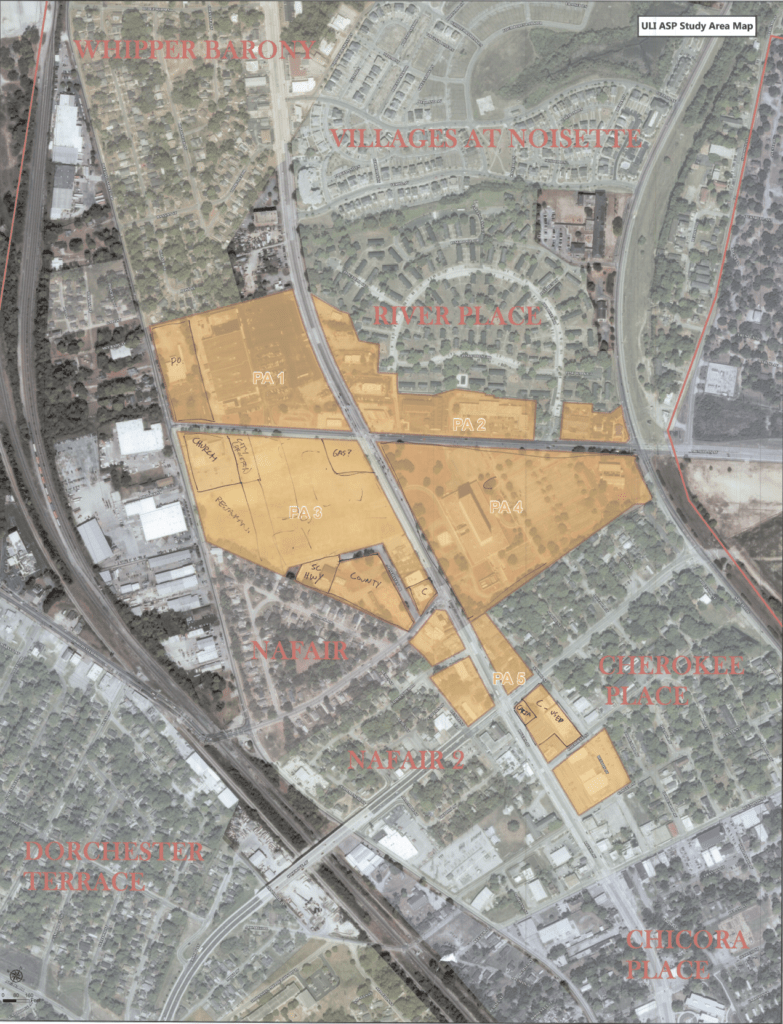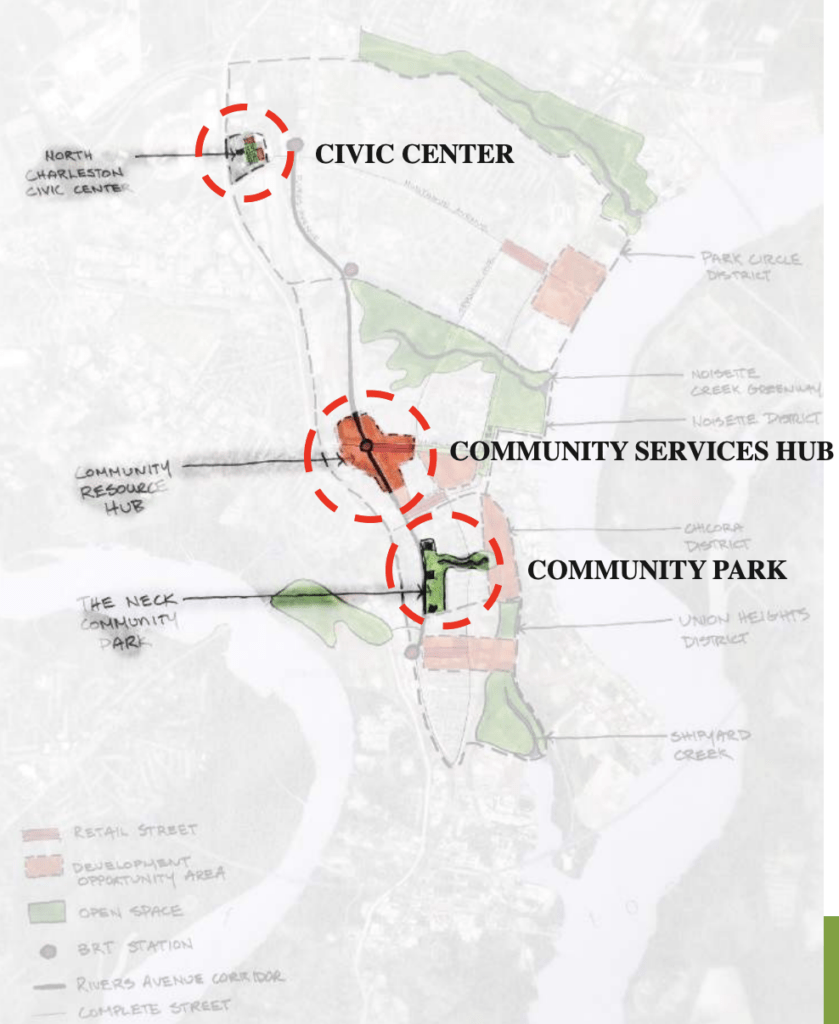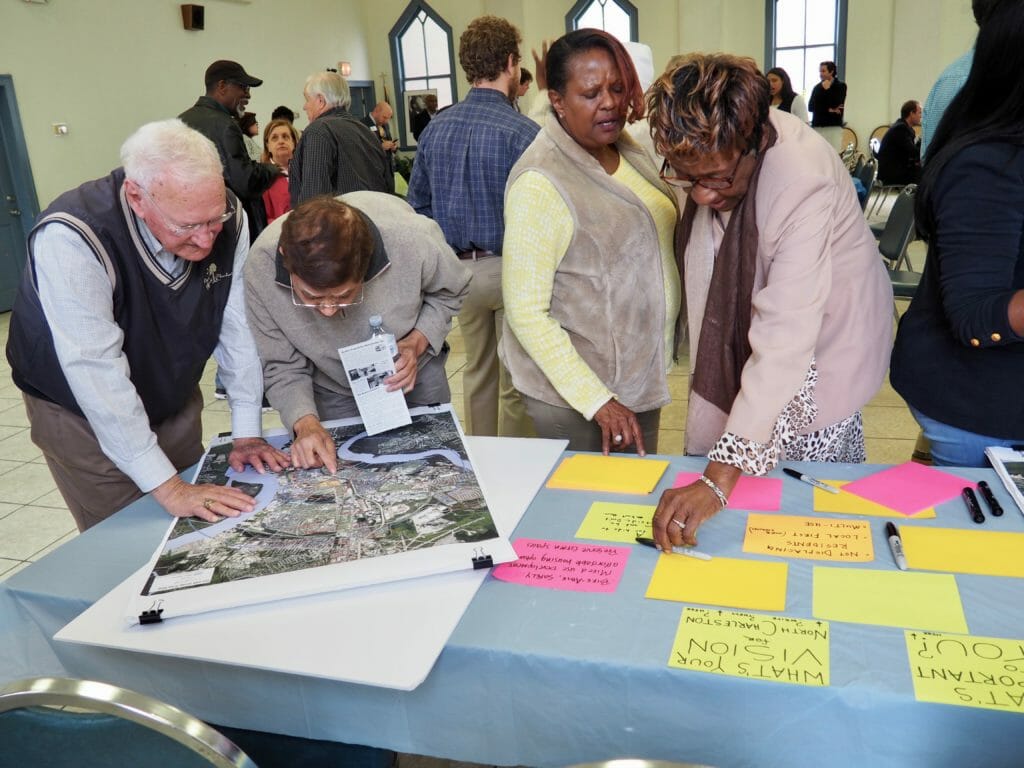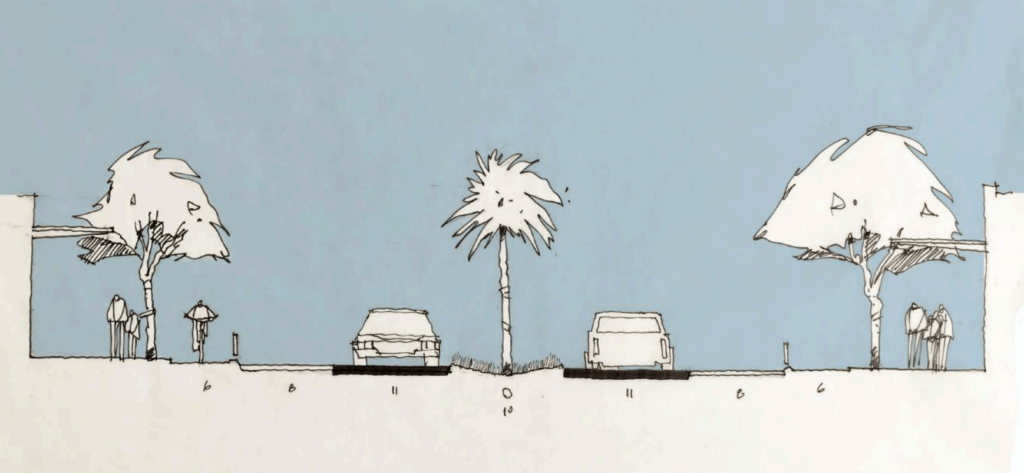Top Story
Date: March 31 – April 5, 2019
Location: North Charleston, SC
Sponsor: City of North Charleston, Charleston County, and the South Carolina Coastal Conservation League.
Subject Area: Adaptive Reuse and Economic Development
Panel Chair: Andrew Irvine, Stantec, Denver, Colorado
Panel Background
The City of North Charleston was established in 1972, becoming the ninth largest city in South Carolina. Even prior to incorporation, North Charleston boasted several military bases and operations that formed the backbone of the community’s economic prosperity and population growth. So, in 1996 when the Charleston Naval Base and Shipyard closed after almost 100 year of operation, the city was faced with not only losing its largest employer, but also its identity.
Today, the City of North Charleston has rebuilt its economy on the strong industrial roots established by its military heritage. New industry and manufacturing have more than replaced the job loss caused by base closures, and the city is now the third largest in the state of South Carolina. However, this growth has not been enjoyed by all North Charleston residents and neighborhoods. This dynamic is highlighted by the City’s tallest building, the former Charleston Naval Hospital which remains shuttered since the base closures. At 10-stories and approximately 400,000 square feet, the hospital is a towering reminder of the community’s loss.
Since the Hospital’s closure, various reuses were proposed and redevelopment opportunities pursued, but none were fully realized. The challenge and stigma of past failed development efforts paired with the disinvestment of surrounding neighborhoods, have made the Hospital a symbol of contentious disappointment in a community looking to begin a new, more prosperous chapter. The Advisory Services Panel was invited to North Charleston in March 2019 to offer a fresh perspective on the future of 22-acre Charleston Naval Hospital site, adjacent parcels along Rivers Avenue, and the economic growth of several surrounding neighborhoods — Chicora-Cherokee, Whipper Barony, and Pinecrest. Central to the panel’s charge is to offer the Sponsors a recommendation on whether to repurpose or demolish the Hospital structure, ahead of the planned demolition in May.
Panel Assignment
1. What uses or improvements in the study area would enhance and support both the Bus Rapid Transit (BRT) goals, Charleston County’s effort to establish a community services hub, the City of North Charleston’s goal to eliminate the food desert designation, and preserve the existing neighborhood’s quality of life and affordability?
2. What uses or improvements in the study area may be detrimental to the surrounding neighborhoods and could contribute to displacing these communities?
3. With the pending BRT line established along this corridor including an essential hub and transfer station, is there a target appropriate density/scale of development that addresses questions 1 and 2 above?
4. What tools/strategies are available to help encourage investment within the study area while minimizing or mitigating the disruption to existing neighborhoods?
5. What is the cost benefit of adaptive re-use, versus demolition and new construction, as modes of redevelopment for properties in the study area?
6. Understanding that properties in the study area are both government and privately owned, what role can private/public partnerships play to achieve success of the development?
7. Are public investments needed to the area’s built-environment such as streetscapes, bike lanes, etc.?
8. How can we best involve the existing community in the study so that they have a vested interest in the outcome?
Summary of Recommendations
Development and Redevelopment Recommendations
- Demolish the Naval Hospital and ready the site for equitable redevelopment.
- Develop a refined land use and master plan for County-owned properties in PA -3 and PA -4:
- PA-3: Develop a retail depot that brings needed resources to the area.
- PA-4: Develop a new neighborhood center that includes the planned Transit Center, structured parking, mixed-income housing, open space, and aim for attracting a grocery store.
- Community resources and services should be grouped on three sites: the Civic Center, Community Resources Center, and a Community Park.
- Focus on supporting historic and emerging commercial corridors to function as neighborhood-scale commercial centers. Similar to Montague Avenue, Reynolds Avenue, McMillian Avenue, and Stromboli Avenue could be developed to better serve North Charleston’s southern neighborhoods.
Public Process Recommendations
- Make robust community engagement a top priority for current and future redevelopment projects with the goal of creating an equitable outcome that addresses the needs of existing residents.
- An equitable, accessible, and consistent community engagement strategy should be developed in partnership with community leaders. Aspects of this plan should include:
- Encouraging meaningful engagement throughout the development process from the planning, design, and construction phases;
- Hosting engagement opportunities in the neighborhoods at times and in spaces that are welcoming and accessible for local residents;
- Advertise opportunities in community spaces and use alternative methods of distribution such as during church announcements, culturally relevant radio channels, and education providers (schools, after-school programs); and,
- Make engagement fun and interactive so that community members actively participate and remain interested throughout the development process.
- Create a new District-Wide Zoning Overlay that maximizes the benefit of BRT and fosters focused economic growth.
- Seek out public/private partnerships for the redevelopment of the Naval Hospital site.
- Clarity and transparency is key to attracting sophisticated development partners and can maximize certainty and value.
- Municipalities should pursue ground leases when possible.
- The city and county must grow their capacity to execute complex transactions with developers that maximize project goals.
- The City of North Charleston, Charleston County and Coastal Conservation League should formalize their collaboration with regularly scheduled meetings that:
- Coordinate and project manage ongoing initiatives
- Address stakeholder needs
- Identify resources to enhance projects
- Advocate for the community and region
- Support transparency and interagency communication
Housing Recommendations
- Support affordable housing development and preservation through:
- Modification of the single-family zoning restrictions
- Implementation of density bonuses
- Support for accessory dwelling units
- Creation of a Housing Trust Fund.
- Establish a Department of Housing and Community Development to administer and manage housing programs and strategic partnerships.
- North Charleston has the highest eviction rate in the country. Stop displacement and evictions of homeowners and renters by educating residents about existing resources and through the creation of new programs that further address these issues.
Neighborhood Recommendations
- The Study Area has the most reported crashes in Charleston County. Safe mobility should be a main priority for the area. Steps to achieving this include:
- Supporting the BRT route along Rivers Avenue
- Widen sidewalks and ensure ADA compliance
- Improve streetscaping
- Incorporate green infrastructure
- Make roadways safer
- Reduce the number of lanes on major roads
- Add landscaped medians
- Create protected bicycle lanes
- Think through creative short-term solutions for providing fresh groceries to residents in the study area. As the area densifies and demand grows, a grocery store might be attracted to the area. In the interim, immediate action should be taken to set up a farmer’s market or other type of temporary grocery space.
- Further link and activate North Charleston’s open spaces to support healthy lifestyles and social interactions.
- Create job training opportunities and support minority and small business programs.





